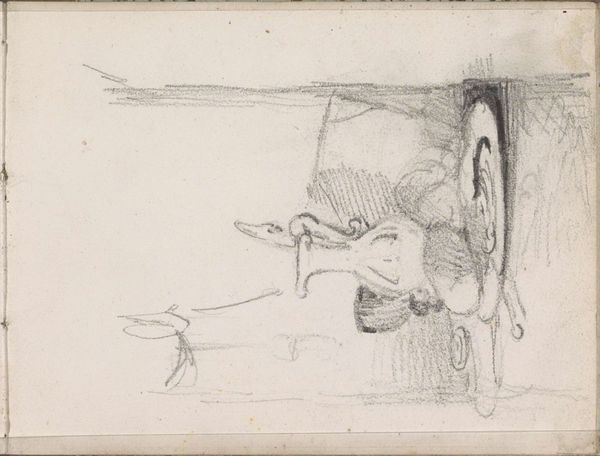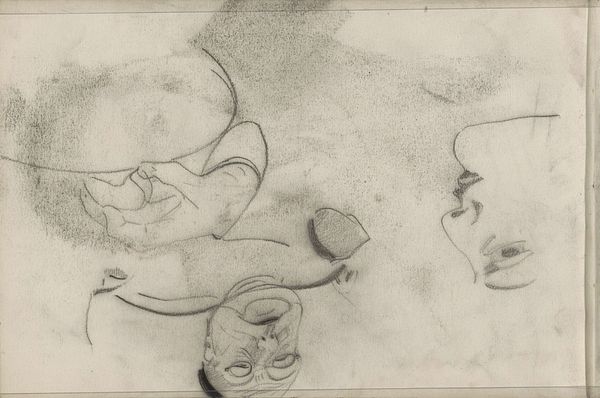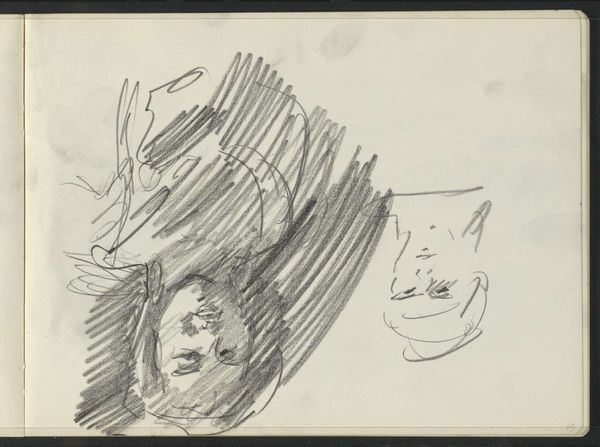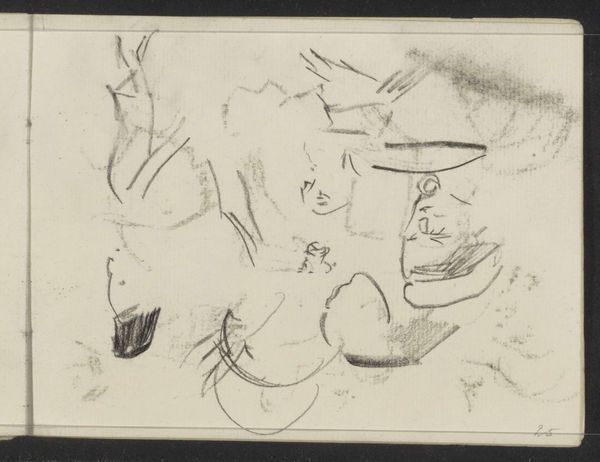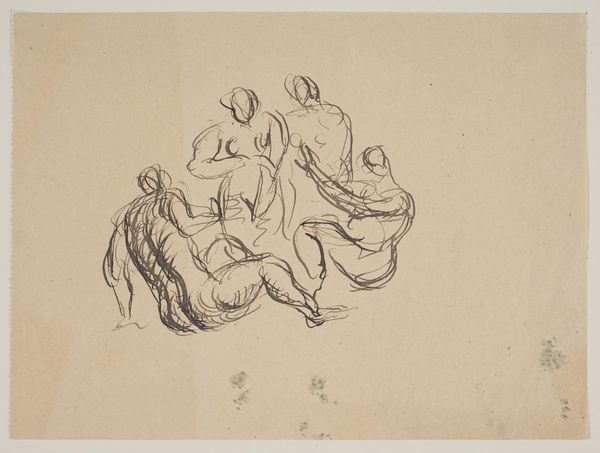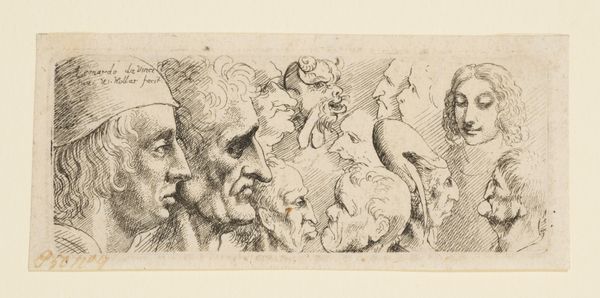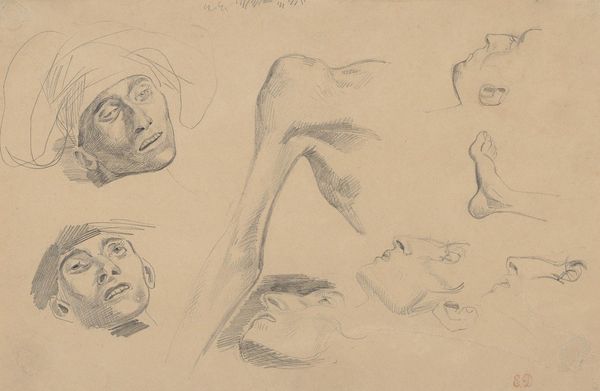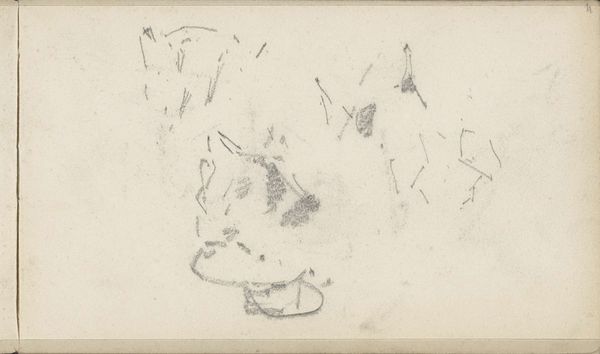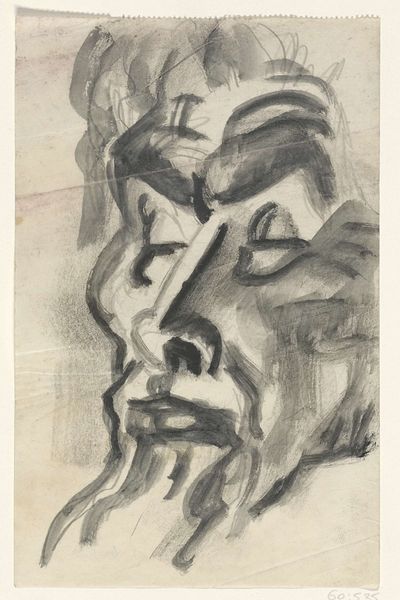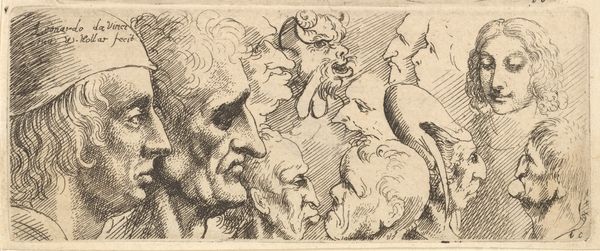
drawing, pencil, charcoal
#
portrait
#
drawing
#
charcoal drawing
#
pencil drawing
#
pencil
#
portrait drawing
#
charcoal
Copyright: Rijks Museum: Open Domain
Editor: This is "Twee beeldhouwwerken van koppen met opengesperde monden," or "Two Sculptures of Heads with Open Mouths," a pencil and charcoal drawing made sometime between 1890 and 1922 by Johanna van de Kamer. The composition, with these stark, almost theatrical faces, feels both unsettling and captivating. What do you see in this piece? Curator: Immediately, I am struck by the symbolism of the open mouths. Throughout history, the open mouth can represent many things: vulnerability, pain, but also, quite powerfully, speech, truth, and even prophecy. Considering the period – a time of great social and political upheaval – do you think that maybe Van de Kamer intended these mouths to be seen as voices crying out? Editor: That's a really interesting idea. I hadn't thought about them as voices so much as expressions of anguish. I guess the two aren't mutually exclusive. Is there a tradition of depicting open mouths this way? Curator: Absolutely. Think of the tradition of the "Mask of Agamemnon," thought to have been placed on the face of a deceased king to forever "speak" his power, or even Edvard Munch’s "The Scream." The open mouth, the silent scream, becomes a potent symbol of the individual's psychological state, of suppressed emotion bursting forth. Van de Kamer's choice of representing sculpted heads suggests an almost frozen, timeless quality to this expression. Do you see this piece reflecting the collective anxiety and uncertainties present during that era? Editor: Now that you point that out, I can definitely see that connection. The fact that they're sculptures also makes them seem like permanent, almost monumental statements of feeling. They're not just fleeting expressions, but carved into stone. Thank you! Curator: My pleasure. It's fascinating to consider how Van de Kamer used these age-old symbols to resonate with the experiences of her own time, and perhaps even with ours. It brings those silent figures into sharp relief, and in a new way.
Comments
No comments
Be the first to comment and join the conversation on the ultimate creative platform.
